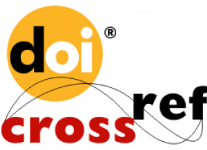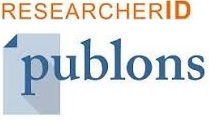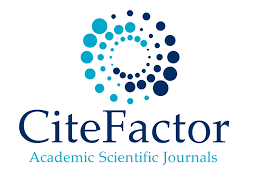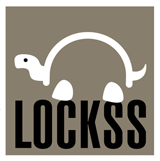Media, Ocean Culture, and Marine Resources: Use of Social Media to Conserve Marine Resources
Abstract
Media functions as a forum for resolving limitations in human senses, space and time in communication. The increasing population of living creatures also increases pressure on the sea which has the potential to damage marine ecosystems. As one of the most popular media, social media can be a communication tool to increase awareness and preserve marine resources as an important key to human survival. By studying literature through various articles, data and books, I found that communication has extraordinary persuasive abilities to influence human thought patterns through social media as material for daily consumption. Despite the limitations of space and time, humans can access various information and education in the maritime sector. This research provides insight into the potential and importance of communication on social media as a tool to fight for the preservation of marine resources which are important for the sustainability of marine ecosystems and human life, as well as raising awareness of the importance of managing marine resources well.
Keywords
Full Text:
PDFReferences
Anwar, A. M. (2022). Penerapan Free Ongkir System pada Pemasaran Seafood Melalui Facebook. Eksis: Jurnal Ilmiah Ekonomi Dan Bisnis, 13(2), 163. https://doi.org/10.33087/eksis.v13i2.308
Ban, N. C., Kushneryk, K., Falk, J., Vachon, A., & Sleigh, L. (2020). Improving compliance of recreational fishers with Rockfish Conservation Areas: community–academic partnership to achieve and evaluate conservation. ICES Journal of Marine Science, 77(6), 2308–2318. https://doi.org/10.1093/icesjms/fsz134
Bell, J. B., Guijarro-Garcia, E., & Kenny, A. (2019). Demersal Fishing in Areas Beyond National Jurisdiction: A Comparative Analysis of Regional Fisheries Management Organisations. Frontiers in Marine Science, 6. https://doi.org/10.3389/fmars.2019.00596
Brears, robert c. (2021). Challenges to the Traditional Ocean Economy. Springer Link.
Canonico, G., Buttigieg, P. L., Montes, E., Muller-Karger, F. E., Stepien, C., Wright, D., Benson, A., Helmuth, B., Costello, M., Sousa-Pinto, I., Saeedi, H., Newton, J., Appeltans, W., Bednaršek, N., Bodrossy, L., Best, B. D., Brandt, A., Goodwin, K. D., Iken, K., … Murton, B. (2019). Global Observational Needs and Resources for Marine Biodiversity. Frontiers in Marine Science, 6. https://doi.org/10.3389/fmars.2019.00367
Casola, W. R., Beall, J. M., Peterson, M. N., Larson, L. R., & Price, C. S. (2022). Influence of social media on fear of sharks, perceptions of intentionality associated with shark bites, and shark management preferences. Frontiers in Communication, 7. https://doi.org/10.3389/fcomm.2022.1033347
Chambers, R., Hart, N., Ranger, S., Birney, A., Angheloiu, C., Loring, J., Williams, S., & Hooper, L. (2019). The Marine CoLAB: Taking a CoLABorative, Values Based Approach to Connect People to the Ocean. Frontiers in Marine Science, 6. https://doi.org/10.3389/fmars.2019.00619
Cutler, M. J., Jalbert, K., Ball, K., Bruhis, N., & Guetschow, T. (2022). Fisheries co-management in a digital age? An investigation of social media communications on the development of electronic monitoring for the Northeast U.S. groundfish fishery. Ecology and Society, 27(3), art13. https://doi.org/10.5751/ES-13474-270313
Duro, L., Campos, P. F., Romão, T., & Karapanos, E. (2019). Visual Quotes. Extended Abstracts of the 2019 CHI Conference on Human Factors in Computing Systems, 1–6. https://doi.org/10.1145/3290607.3312830
Forster, C. Y., Hochuli, D. F., Keith, R. J., Latty, T., White, T. E., & Middleton, E. J. T. (2023). Social media conservation messaging mirrors age‐old taxonomic biases in public domain. Austral Ecology, 48(4), 687–698. https://doi.org/10.1111/aec.13288
Gao, L., Yan, A., & Yin, Q. (2022). Marine Ecological Governance Under New Media Environment: Tripartite Evolutionary Game and Simulation Analysis. Frontiers in Environmental Science, 10. https://doi.org/10.3389/fenvs.2022.941247
García‐Poza, S., Pacheco, D., Cotas, J., Marques, J. C., Pereira, L., & Gonçalves, A. M. M. (2022). Marine macroalgae as a feasible and complete resource to address and promote Sustainable Development Goals (SDGs). Integrated Environmental Assessment and Management, 18(5), 1148–1161. https://doi.org/10.1002/ieam.4598
Gunn, C. M., Amerson, A. M., Adkisson, K. L., & Haxel, J. H. (2022). A Framework for Effective Science Communication and Outreach Strategies and Dissemination of Research Findings for Marine Energy Projects. Journal of Marine Science and Engineering, 10(2), 130. https://doi.org/10.3390/jmse10020130
Haas, B., Haward, M., McGee, J., & Fleming, A. (2021). Explicit targets and cooperation: regional fisheries management organizations and the sustainable development goals. International Environmental Agreements: Politics, Law and Economics, 21(1), 133–145. https://doi.org/10.1007/s10784-020-09491-7
Hersinta, H., & Sofia, A. (2022). SOCIAL MEDIA, YOUTH AND ENVIRONMENTAL LOW-RISK ACTIVISM: A CASE STUDY OF SAVESHARKS INDONESIA CAMPAIGN ON TWITTER. ASPIRATION Journal, 1(2), 114–135. https://doi.org/10.56353/aspiration.v1i2.11
Kelly, R., Fleming, A., Pecl, G. T., von Gönner, J., & Bonn, A. (2020). Citizen science and marine conservation: a global review. Philosophical Transactions of the Royal Society B: Biological Sciences, 375(1814), 20190461. https://doi.org/10.1098/rstb.2019.0461
Liao, Y.-Y., & Chang, C.-C. (2021). Impact of the Slow Fish Movement Curriculum on Students’ Awareness of Marine Environment Conservation and Marine Resource Sustainability. Sustainability, 13(5), 2880. https://doi.org/10.3390/su13052880
Liu, X., Mei, Z., Zheng, J., Hao, Y., Wang, K., & Wang, D. (2022). Media used as an information source to solve baseline gaps in marine megafauna conservation: Recommendations to standardize reports on cetacean stranding events. Aquatic Conservation: Marine and Freshwater Ecosystems, 32(4), 658–670. https://doi.org/10.1002/aqc.3784
Malde, K., Handegard, N. O., Eikvil, L., & Salberg, A.-B. (2020). Machine intelligence and the data-driven future of marine science. ICES Journal of Marine Science, 77(4), 1274–1285. https://doi.org/10.1093/icesjms/fsz057
Marshak, A. R., & Link, J. S. (2021). Primary production ultimately limits fisheries economic performance. Scientific Reports, 11(1), 12154. https://doi.org/10.1038/s41598-021-91599-0
Mistry, J., Jafferally, D., Mendonca, S., Xavier, R., Albert, G., Robertson, B., George, E., Benjamin, R., & Ingwall-King, L. (2023). Video-mediated dialogue for promoting equity in protected area conservation. Oryx, 57(3), 325–334. https://doi.org/10.1017/S0030605322000904
Natsir, M., & Saragih, B. (2023). Analysis Application of Social Media Communication Effectiveness in Maritime English. Randwick International of Education and Linguistics Science Journal, 4(1), 158–163. https://doi.org/10.47175/rielsj.v4i1.654
Niu, Z., Jeong, D. C., Brickman, J., Nam, Y., Liu, S., & Stapleton, J. L. (2020). A Picture Worth a Thousand Texts? Investigating the Influences of Visual Appeals in a Text Message-Based Health Intervention. Journal of Health Communication, 25(3), 204–213. https://doi.org/10.1080/10810730.2020.1731631
Of, E., Media, S., In, C., Of, I., & Policies, E. S. (2022). SMART Journal.
Rayner, R., Jolly, C., & Gouldman, C. (2019). Ocean Observing and the Blue Economy. Frontiers in Marine Science, 6. https://doi.org/10.3389/fmars.2019.00330
Roy Chowdhury, P., Medhi, H., Bhattacharyya, K. G., & Hussain, C. M. (2023). Impacts of emerging and novel plastic waste variants on marine and coastal ecosystems: Challenges and implications on the circular economy. WIREs Energy and Environment, 12(5). https://doi.org/10.1002/wene.480
Rubenstein, M. A., Weiskopf, S. R., Bertrand, R., Carter, S. L., Comte, L., Eaton, M. J., Johnson, C. G., Lenoir, J., Lynch, A. J., Miller, B. W., Morelli, T. L., Rodriguez, M. A., Terando, A., & Thompson, L. M. (2023). climate change and the global redistribution of biodiversity: substantial variation in empirical support for expected rangCe shifts. Environmental Evidence, 12(1), 7. https://doi.org/10.1186/s13750-023-00296-0
Shrader, A. M., & Louw, I. (2023). Using a social media project as a way to get students to communicate conservation messages to the general public. Journal of Biological Education, 57(3), 484–494. https://doi.org/10.1080/00219266.2021.1924231
Sogabe, A., & Takatsuji, K. (2021). Marine-dumped waste tyres cause the ghost fishing of hermit crabs. Royal Society Open Science, 8(10). https://doi.org/10.1098/rsos.210166
Trujillo, A. M. (2021). Metodologias do ensino de Literatura. Travessias, 15(1), 139–155. https://doi.org/10.48075/rt.v15i1.25421
Voskamp, A., Hof, C., Biber, M. F., Böhning-Gaese, K., Hickler, T., Niamir, A., Willis, S. G., & Fritz, S. A. (2022). Projected climate change impacts on the phylogenetic diversity of the world’s terrestrial birds: more than species numbers. Proceedings of the Royal Society B: Biological Sciences, 289(1979). https://doi.org/10.1098/rspb.2021.2184
Westphal, A. M., Breiter, C.-J. C., Falconer, S., Saffar, N., Ashraf, A. B., McCall, A. G., McIver, K., & Petersen, S. D. (2022). Citizen science and machine learning: Interdisciplinary approach to non-invasively monitoring a northern marine ecosystem. Frontiers in Marine Science, 9. https://doi.org/10.3389/fmars.2022.961095
Woloshin, S., Yang, Y., & Fischhoff, B. (2023). Communicating health information with visual displays. Nature Medicine, 29(5), 1085–1091. https://doi.org/10.1038/s41591-023-02328-1
DOI: http://dx.doi.org/10.52155/ijpsat.v45.1.6300
Refbacks
- There are currently no refbacks.
Copyright (c) 2024 Raedha - Gufrani, Fitria Santi S.Ag, M.I.Kom, Dinda Annisa Ramadhani, Agnini Dana Rullah, Dwi Handayany Puspa Ningrum, Mohammed Farhan Isniwijaya Tahar, Riefda Hanifatus Salma, Yusi - Erwina

This work is licensed under a Creative Commons Attribution 4.0 International License.



















